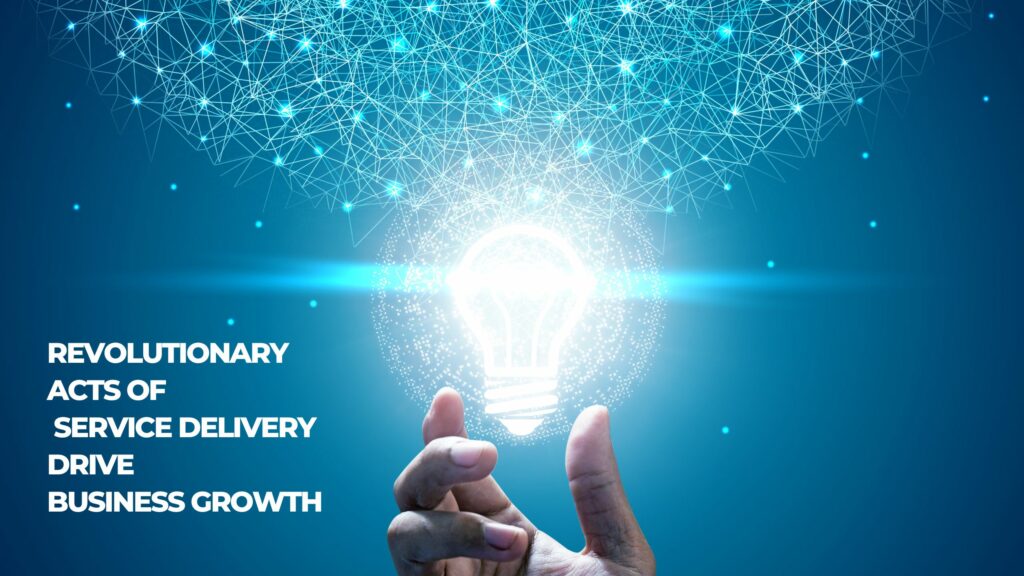Great intentions do not deliver great customer experiences. Great actions do. Have you ever sat back and marvelled at how some businesses just seem to capture the hearts, minds and wallets of their customers? Have you ever wondered how these businesses do it? Have you wondered about how they “know” exactly what to package and how to package these extraordinary customer experiences?
Let me share that there’s nothing magical about the “knowing.” It’s about two points of exception that set these businesses apart. Firstly, they are obsessive about “knowing” their customers and prospective customers’ patterns and secondly, knowing this, they take bold steps to convert those patterns into “buyer-ready” and “decision-ready” moments.
To you, me and other spectators, their moves seem revolutionary and transcendent. To these businesses, their moves are simply actions being taken to move their customers and prospective customers along a progressive journey that is based on a logical schedule of next level solutions.
Let’s take an example that I’ve shared in the past. One of our clients had implemented their digital transformation initiative two years ahead of the pandemic, so when the mass tech adoption shock hit the world of business, our client only had a ten percent shift to complete their journey. Whilst other businesses were being disrupted from the outside and therefore, were battling an external force, our client had experienced the good fortune to run their disruption with some measure of control over their own playbook. Prior to the pandemic, when our client implemented the change, it may have seemed revolutionary to customers and onlookers, however, to our client, it was simply the next level of transcendence on their promise to serve customers.
Great intentions do not deliver great customer experiences. Great actions do.
As a Service Transformation Consultant, I encounter many businesses that function consistently, at a minimum level of service delivery that matches the minimum expectations of a critical mass of their customers. The largely predictable revenue generated by these customers, in turn, produces a level of earnings that is acceptable to the businesses. No adjustments needed.
Whilst it’s a win for both parties, it’s also a driver of lethargy for both, as well. Customers expect nothing more and the businesses deliver nothing more than the minimum.
Revolutionary acts of service are only deemed revolutionary, if a business has a pattern of delivering at minimum level. If a business has a track record of progressive and sustained customer experience transformation, then revolutionary becomes normalized. What now matters, is sustained momentum.
As a new generation of customer emerges, these minimum service businesses will be the best candidates for launching revolutionary acts of service delivery, if they wish to avoid becoming relics of the past. Of course, the appropriate expression of these revolutionary acts will vary from business to business and sector to sector. You wouldn’t want a marching band in the ICU.
Revolutionary acts of service are only deemed revolutionary, if a business has a pattern of delivering at minimum level.
Here are some actions to be considered, whenever a business that is a member of the minimum service delivery population, decides to shift to a more elite, customer-centric, population.
There will be the need to displace the existing mentality that drives the minimal service. The low-key, maintenance level of thinking, should be replaced with a wide-spread, “we are thrilled to serve our customers” mentality.
The business should focus, ultimately, on getting customers to love the business as a brand. When customers think about the business, they should be enraptured by powerfully positive feelings that come to mind. When a business occupies this top-of-mind, front-of-mind, elevated level of connectedness to its customers, it would have transcended to “brand status.” Of course, we know that when customers love a brand, price becomes (almost) irrelevant.
Identifying and fixing permanently, the first, most pressing customer problem to be solved, should be an early undertaking. One such problem that comes to mind, is the need to eradicate data silos. Instead of saying we need to eradicate departmental silos, let’s go straight to the endgame, which is the need to release the right data, on time and to the right location.
As a new generation of customer emerges, these minimum service businesses will be the best candidates for launching revolutionary acts of service delivery, if they wish to avoid becoming relics of the past.
Finally, any business that is intent on becoming a modern-day, customer-centric brand, has to master the delivery of next-level solutions to its customers. Knowing and understanding customers’ needs inside out, then integrating the brand experience across all channels with which the customer interacts, is key to staging a customer journey that becomes delightful, from start to end.
Now, tell me, wouldn’t it be great to interact with businesses where revolutionary acts of service are so “normal,” that they’re on the menu every day?

